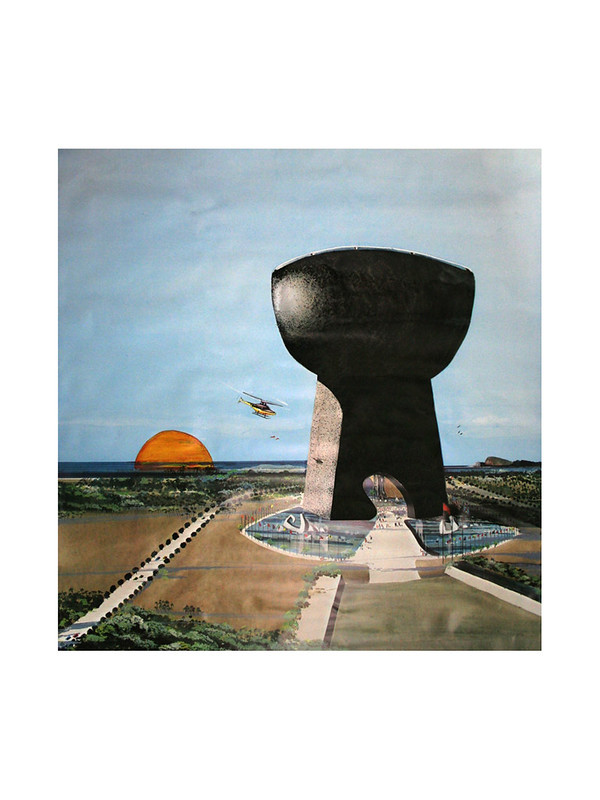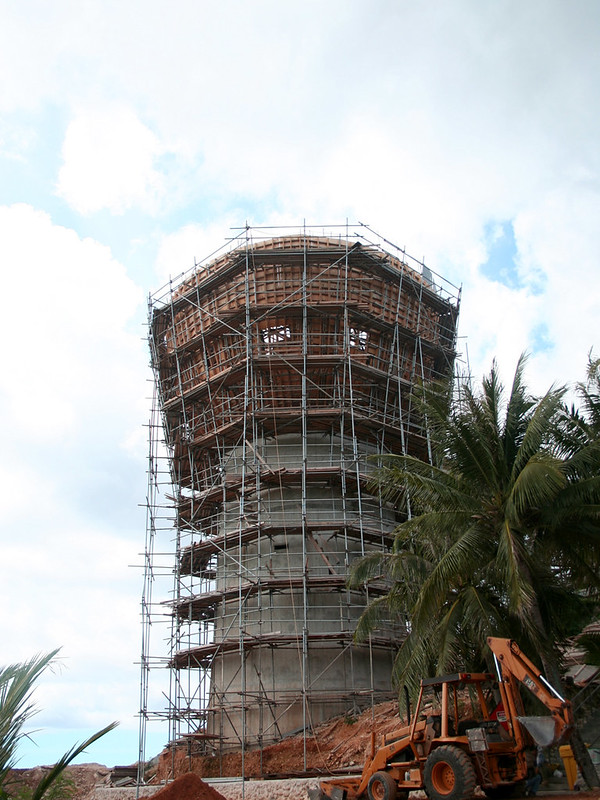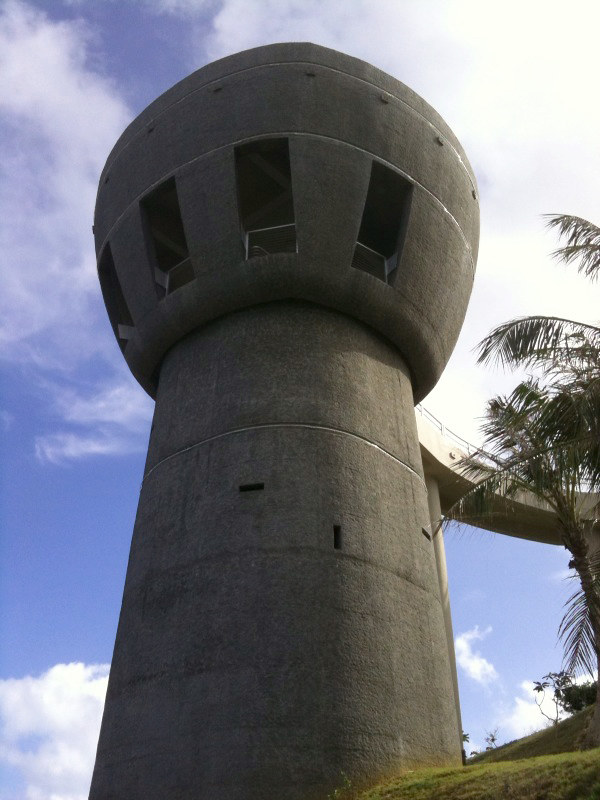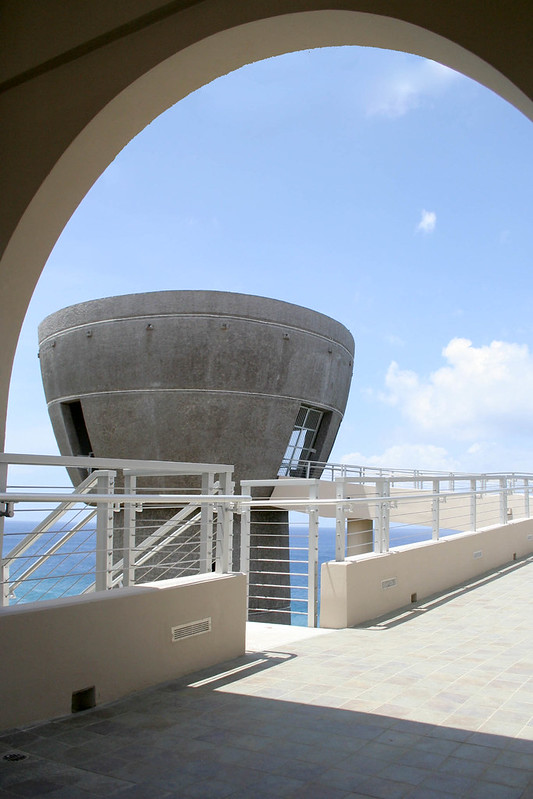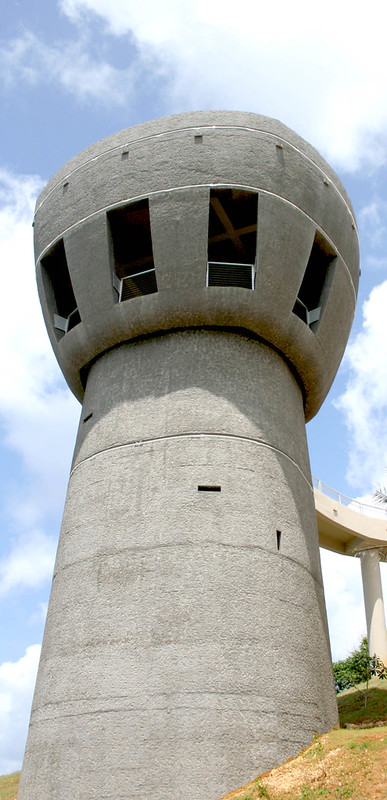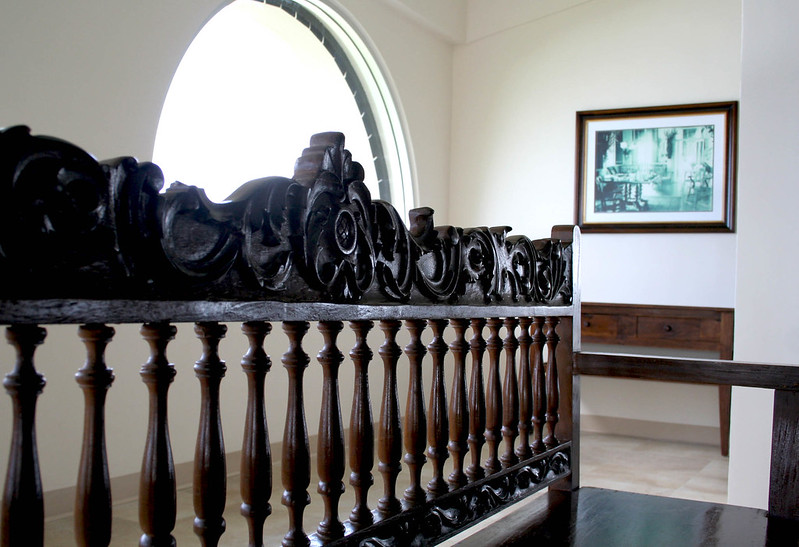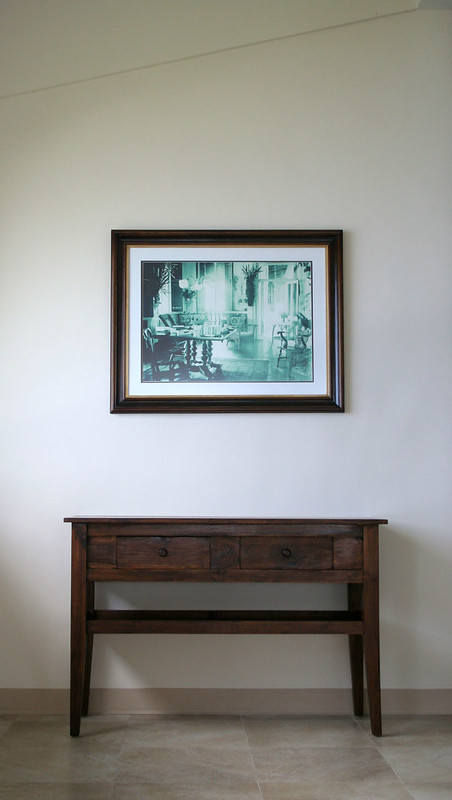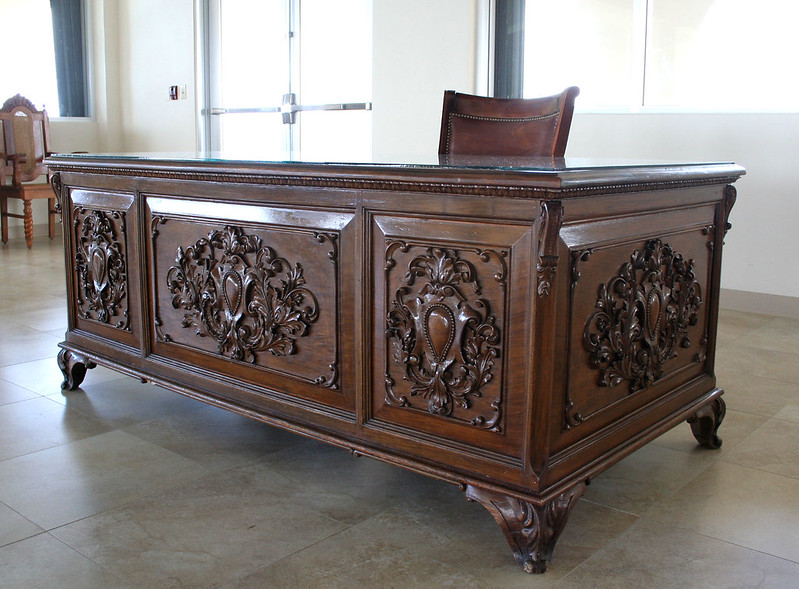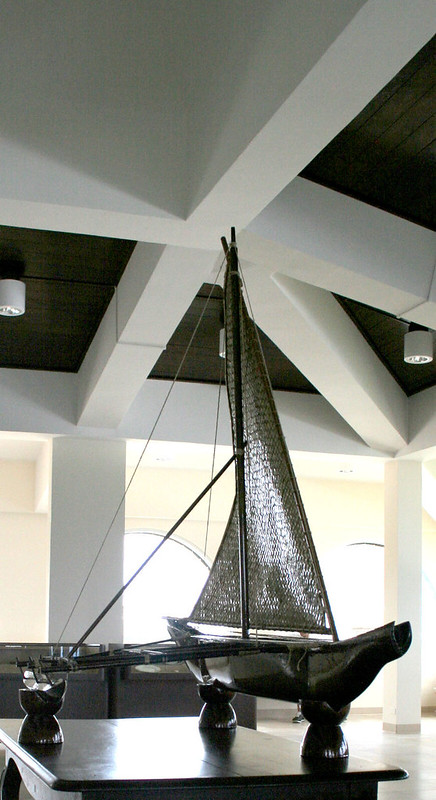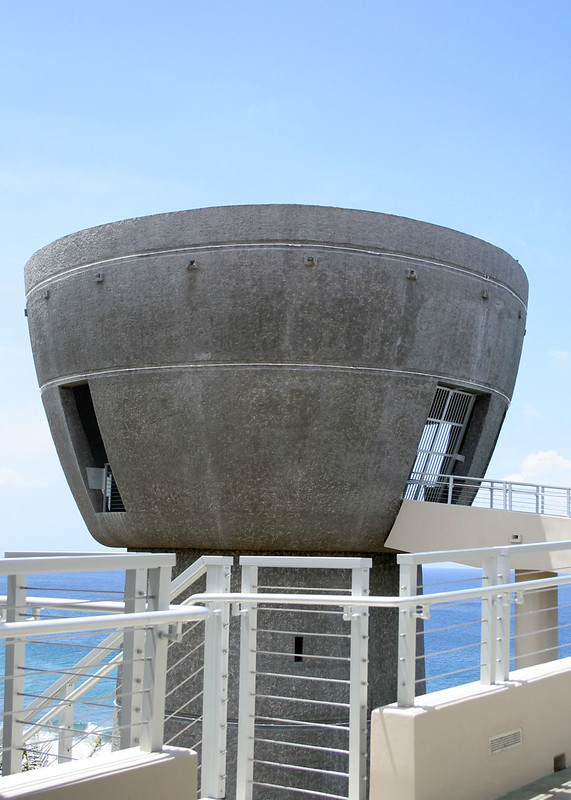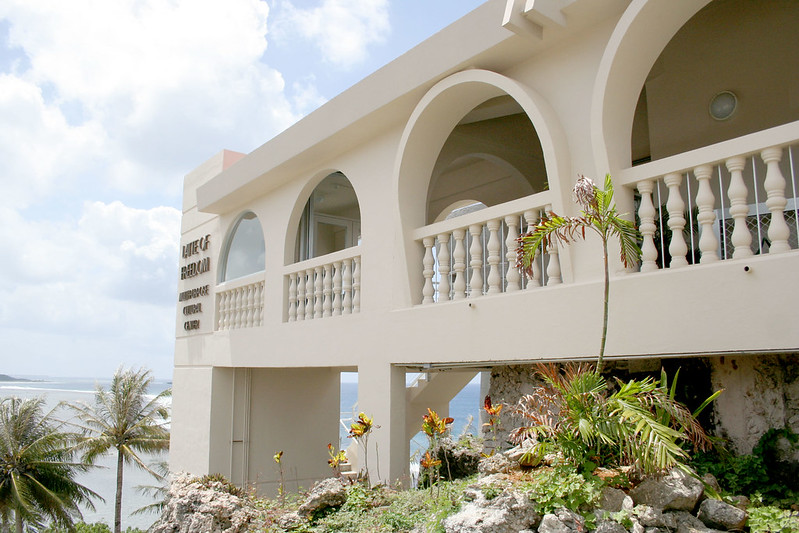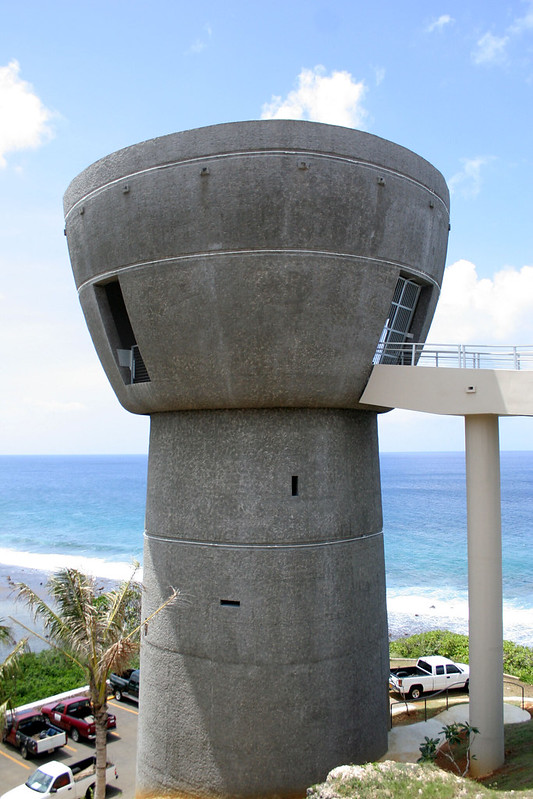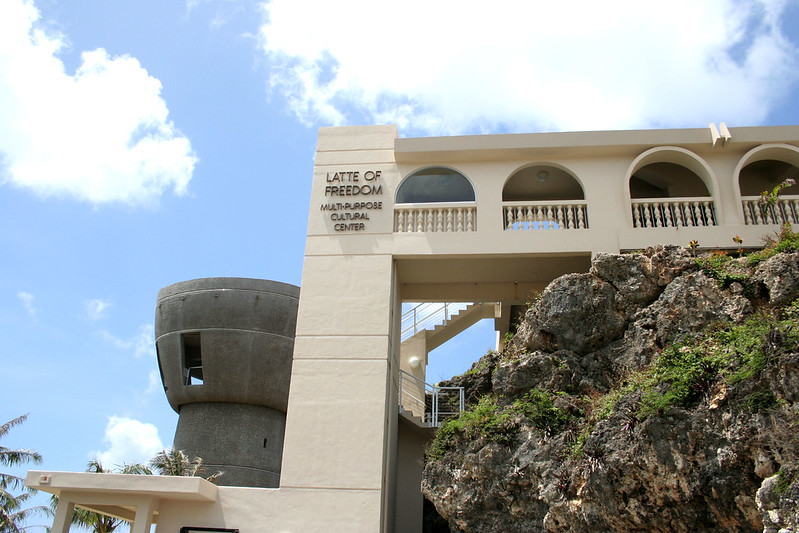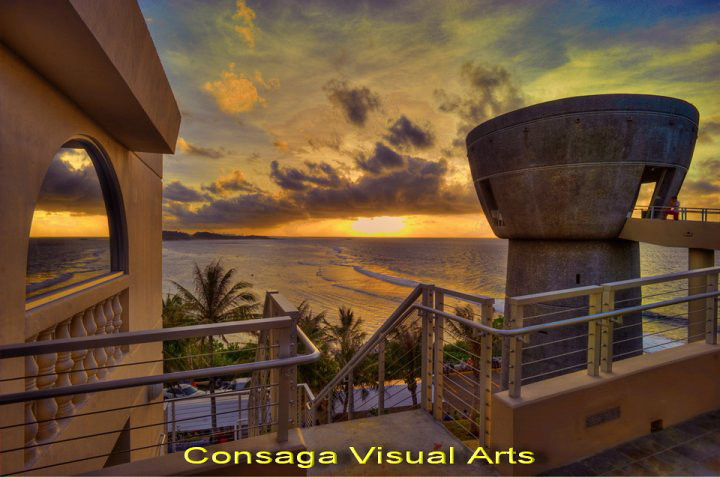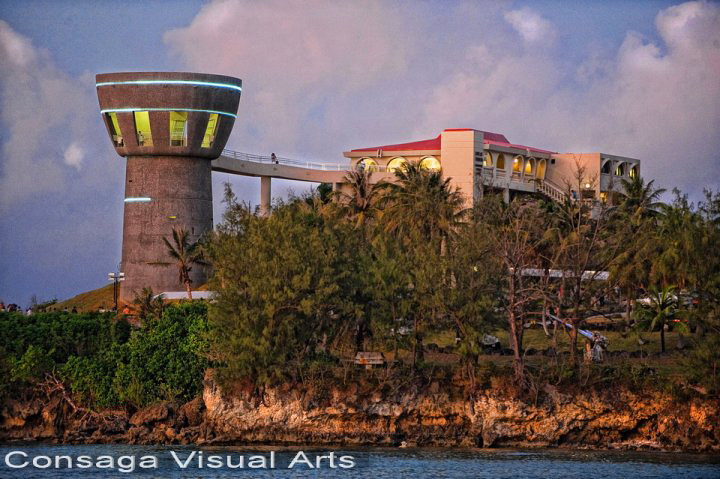An American monument and symbol of Chamorro strength
On 10 March 1976, Governor Ricardo J. Bordallo announced his plan to build an American monument that embodied the Chamorro culture to be called The Latte of Freedom. A scaled down version of the original plan was completed in 31 March 2010, thirty-four years later and twenty years since Gov. Bordallo’s death in 1990.
Bordallo wanted the Latte of Freedom to be for the West what the statue of Liberty is to the East of the United States. The Statue of Liberty was completed in 1876 to commemorate America’s centennial and placed in New York City, on America’s east coast, to welcome visitors from Europe. Similarly, the Latte of Freedom, whose plans were drafted in 1976 to commemorate America’s bicentennial, was to be on Guam, America’s westernmost coast, to welcome visitors to the United States from Asia. In addition to being the newest American monument, the Latte of Freedom also symbolizes the unique heritage of Guam in both structure and purpose.
The latte, a stone structure unique to the Marianas, consists of a pillar and capstone. Latte was first built in ancient Guam between 1200 BP to 300 BP (before present) and was in use up until around the time that the Spanish colonized the Marianas in 1668.
Latte was used to form the foundation of buildings of significance in Chamorro society, such as the guma’ uritao (men’s house) and the homes of high-ranking families. Latte structures are believed to have absorbed the shock of earthquakes, common in the region, and did not decay along with the wooden and thatched Chamorro structures, thus representing strength and endurance in the Mariana Islands.
Original plan
The original plan for the Latte of Freedom was quite different than the latte-shaped building that was actually built. The original structure was designed by architect and engineer Thomas J. Davis. It was planned to be 200 feet tall in the shape of an ancient Chamorro latte stone located on Two Lover’s Point overlooking Tumon Bay.
The pillar was to have a multi-purpose area with a Chamorro cultural center, shops, a lobby, elevators, offices, bathrooms, and seats; a museum, which included an exhibition room, lecture room, workshop, storage area, elevators, a lobby, office, and documentation service office; and a small group convention area. The capstone was going to have a small conference area, composed of a rehearsal stage, workshop, stagecraft, dressing room, music office, music library, lobby, rehearsal area, instrument storage area, practice rooms, and television and radio rooms. Below ground was to have had a restaurant, book and gift shop, and a gallery to display changing exhibits. A program for a uniform and complete system of informative historical markers at all important sites on Guam was also proposed.
However, this plan was expensive. The original Latte of Freedom was estimated to cost $25 million. Soon after the plan for the monument was drafted, the school children of Guam donated pennies, ultimately adding up to $37,000, to the cause. Proceeds from Liberation Day festivals were also contributed during Bordallo’s tenure as governor of Guam (1975 – 1978 and 1983-1986). Because that was still not enough, the money stayed in the bank for the next thirty-three years, collecting interest and ultimately coming up to $2.8 million.
Current latte
In 2004, plans for the Latte of Freedom were revised, shortening it from 200 feet tall to 80 feet tall and moving it to the Ricardo J. Bordallo Governor’s Complex in Adelup and next to the former Guam Museum. A partnership with the government of Guam developed where the Foundation built a Latte of Freedom for viewing tower to the West and the old museum was restructured into a new Hall of Governors facility at a cost of $2 million.
The Hall of Governors commemorates the twelve Guam governors who held office since the signing of the 1950 Organic Act of Guam until the present day, with exhibits from the Office of the Governor of Guam, the Guam Museum, the Department of Chamorro Affairs, and others. The Hall can be used for social functions, meetings and cultural events. The Latte of Freedom tower provides a panoramic view of Guam’s western shores.
The Latte of Freedom was turned over to the Office of the Governor of Guam after its ribbon cutting on March 31, 2010. An agreement is being worked out to put it under the management of the Department of Chamorro Affairs and the Guam Museum Foundation.
Because the latte represents strength, it was very important that the Latte of Freedom was structurally strong. The tower is made of reinforced concrete, framed with structural steel beams, and faced with stucco. The walls are 14-inches thick. The floors inside are made of granite and marble. It is designed for Seismic Zone-3 and protects against typhoons of up to 150 miles per hour. Additionally, the structure is built on solid rock. All these precautions guarantee that the Latte of Freedom will stand as long as the Chamorro culture is alive on Guam.
A plaque located at the front of the structure is dedicated to the school children whose fundraised to build the Latte of Freedom. Field trips to the Latte of Freedom are also free of charge. The land is owned and leased by the government of Guam, but efforts are underway to identify and sublease a private company to fund, maintain, and operate the Latte of Freedom.
Board of Directors
The Latte of Freedom’s current board of directors is as follows:
- Madeleine Z. Bordallo, President
- Gloria B. Nelson, Vice President
- Antonio M. Palomo, Secretary
- Taling Taitano, Treasurer
- Jackie A. Marati, Assistant Treasurer
- Arlene Bordallo, Director
- Phillip Flores, Director
- Greg Perez, Director
- Jeanne Pangelinan, Director
- Tom Camacho, Director
- Cathy Sablan Gault, Director
- Joann Camacho, Honorary Chairperson
- Joaquin C. Arriola, Jr. Legal Counsel
- Mark Ruth, Architect
- Sylvia M. Flores, Design Consultant


